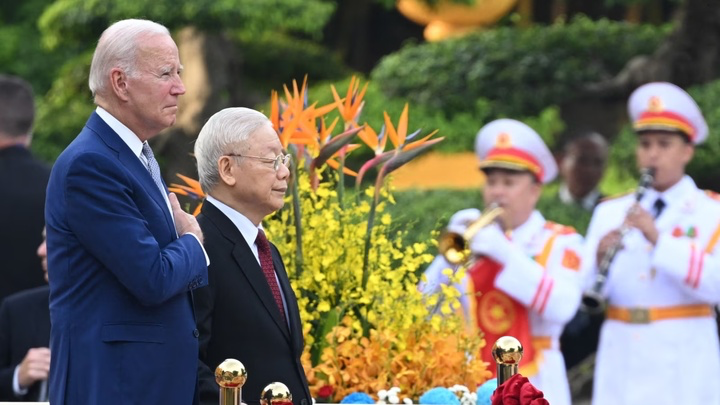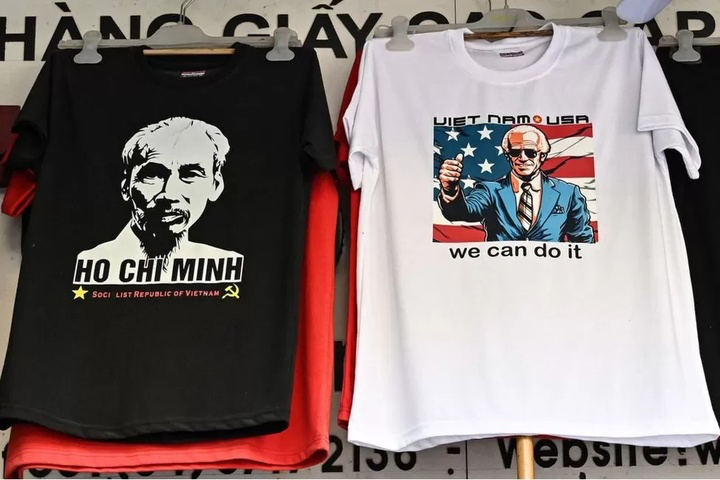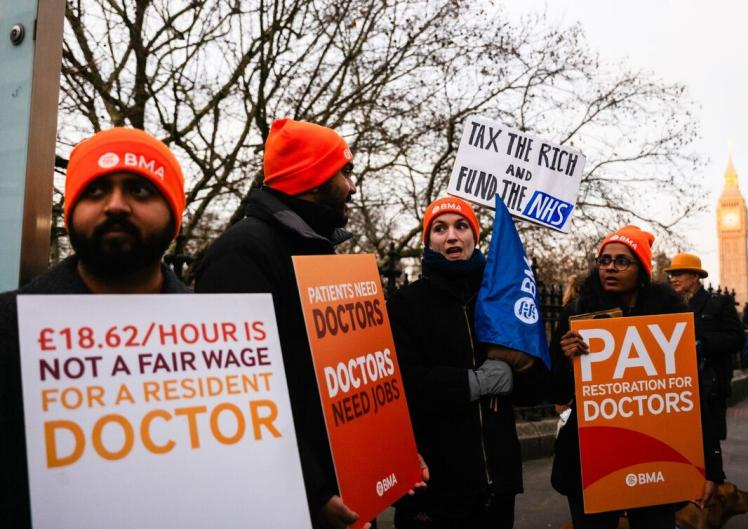
On September 11, US President Biden and General Secretary of the Communist Party of Vietnam Central Committee Nguyen Phu Trong jointly announced that they would upgrade the relationship between the two countries to the highest level of comprehensive strategic partnership. This is 15 years later than the establishment of a "comprehensive strategic partnership" between Vietnam and China. Previously, China, Russia, India and South Korea had established "comprehensive strategic partnerships" with Vietnam respectively.
Officials and entrepreneurs from the United States and Vietnam have reached billions of dollars in business deals and partnerships in Hanoi, involving top American companies such as Boeing, Microsoft, Intel, and Nvidia, as well as many fields such as semiconductors, aerospace, and infrastructure. Biden tried to prove that the relationship between the two countries has entered a "new stage."
The United States further deepens economic integration with Indo-Pacific countries. Apparently more political than economic considerations. The U.S. government hopes to increase its influence in the region by strengthening ties with Southeast Asian countries. National Broadcasting Corporation stated that in the context of tense trade relations between the United States and China, Vietnam's position in the global supply chain is becoming increasingly important. Reuters stated that the United States has been promoting the upgrade of relations with Vietnam for several months because the United States regards Vietnam as "a key country to ensure that global supply chains are protected from China-related risks."
The Vietnamese government is clearly aware of this as well, with Le Hong Hiep of the Yusof Ishak Institute of Southeast Asia in Singapore saying Hanoi has thought this through, adding that the agreement with the US is "symbolism rather than substance". Carl Thayer, emeritus professor at the Australian Defense Force College at the University of New South Wales, said Vietnam has skillfully balanced its relations with major powers and has no plans to abandon that approach now. Marshall, the former deputy assistant secretary of state for East Asian affairs at the U.S. State Department, previously said that the new partnership agreement between the United States and Vietnam does not necessarily mean that Vietnam is moving away from China and building better relations with the United States.

A vendor sells shirts with images of Ho Chi Minh and Joe Biden at a souvenir shop in Hanoi, Vietnam
In 2019, the Sino-US trade war began. In the same year, the United States became Vietnam’s largest export market. Vietnam has written a "victory formula" - buying intermediate products and components from China, going through less complex processing and assembly, and then selling the final products to the United States to make a profit. By the first half of 2023, Vietnam's exports of goods to the United States reached 44.2 billion U.S. dollars, but it only imported about 7 billion U.S. dollars from the United States. The trade surplus between Vietnam and the United States reached US$37.2 billion. During the same period, Vietnam imported US$50.1 billion in goods from China. However, it only exported US$25.6 billion worth of goods to China, and Vietnam’s deficit with China reached US$24.5 billion.
The investment prospects in Vietnam may be ascertained from the situation of Vietnamese company VinFast. In August, the stock market witnessed the madness of Vietnamese electric vehicle manufacturer VinFast. After VinFast was listed on Nasdaq on August 15, its share price rose by nearly 700%, and the company's market value increased to more than 190 billion US dollars, exceeding the combined market value of Mercedes-Benz, Volkswagen and General Motors. Then it began to plummet rapidly. Last Tuesday's closing price was almost halved, down 43.84%. The latest total market value was US$56.5 billion. The stock price was "returned to its original shape" and returned to the price 14 days ago. According to calculations by Bloomberg, VinFast's sales this year are less than 1% of General Motors's full-year sales in 2022.
Vietnam lacks an automobile industry and has no corresponding industrial chain. The supply chain relies heavily on suppliers from China, Germany and other countries, and its bargaining power is weak, making it difficult to control costs. The starting price of its VF8 model sold in North America is US$46,000, while the current price of Tesla Model Y is only US$36,640, which is extremely lack of cost-effectiveness. In the field of new energy vehicles, Tesla and BYD have already established their ecological niches, and it is extremely difficult for VinFast to get a share of the pie.
The situation of VinFast is a microcosm of Vietnam's industry, which lacks industrial chain and market depth. But it is undeniable that, in the context of a new round of cooperation between the United States and Vietnam, good concept marketing and good storytelling will indeed bring huge profits and risks. From this point of view, Vietnam deserves the attention of short-term investors.

Junior doctors in the UK officially launched a five-day strike on Wednesday (December 17th).
Junior doctors in the UK officially launched a five-day str…
The Thai Pride Party is considering nomasting three candida…
With the continuous intensification of international sancti…
With $15.82 billion in sales and a 108% year-over-year incr…
According to the South Korean media Dealsite, the recent te…
The current geopolitical conflicts around the world are oft…